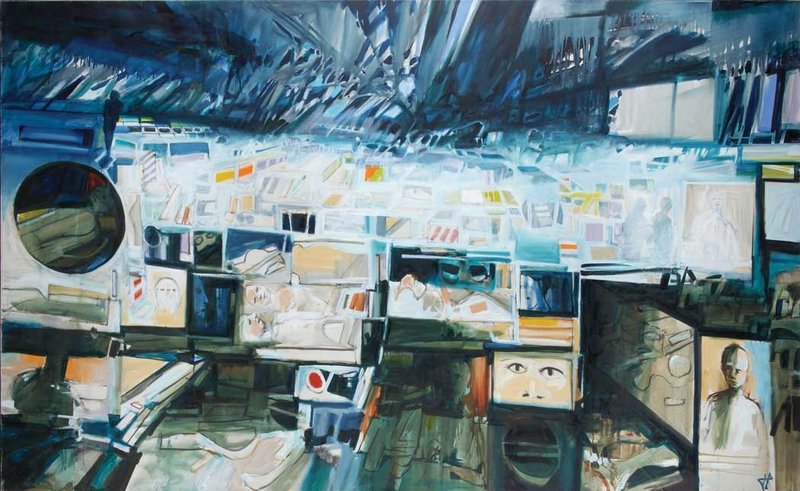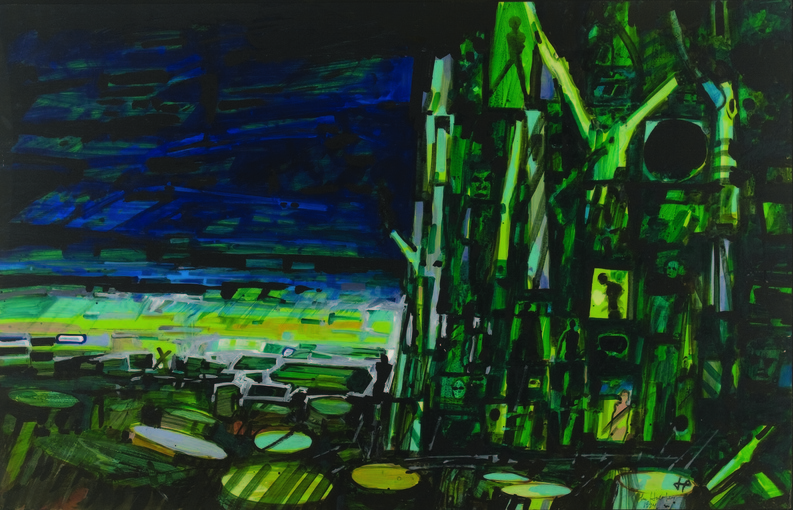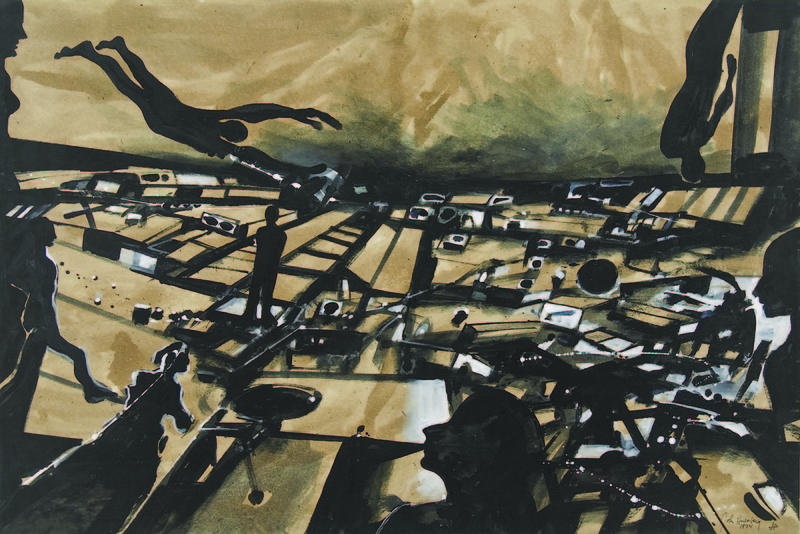MONHEGAN — It’s been six years since the painter John Hultberg died, and 25 years since he spent any significant time on Monhegan Island.
But Hultberg’s spirit is very much alive on the island this summer. The Monhegan Museum is showing a large selection of his oil and acrylic paintings through Sept. 30.
“John Hultberg and Monhegan Island: The Man, The Place and His Dreams” solidly places Hultberg on the island in ways that no other exhibition has ever done.
It’s an interesting concept, because Hultberg’s work generally feels quite dark. His paintings do not suggest beautiful landscapes and seascapes, as so many Monhegan works do.
Ed Deci, who runs the museum and assembled the works for this exhibition, wants people to walk away from the show with the notion that Monhegan directly influenced Hultberg and his view of the world.
“Because he has been gone from the island for 25 years, most people here did not know him, and because he very rarely showed his paintings on the island, some people who knew him did not know what his work was like,” Deci said in an email interview. “I wanted them to see the amazing work that this man produced, and to see how it was influenced by Monhegan.”
Make no mistake, this show is well worth traveling to Monhegan to see. The boat from Port Clyde is frequent, convenient and affordable.
But Deci fully understands that Monhegan is not necessarily an easy place to reach, so he has arranged for the show to travel.
It will be at the Pace Galleries of Art at Fryeburg Academy beginning Nov. 19, and will move to the Lore Degenstein Gallery at Susquehanna University in Selinsgrove, Pa., next April.
To tie into the Monhegan show, the Portland Museum of Art is showing two Hultberg paintings. One is “Twilight: Down the Drain,” a massive acrylic too big to fit in the Monhegan Museum, and “The Runner,” which once was shown at the White House.
The PMA has upwards of 85 Hultberg works in its collection, including a half-dozen paintings.
Susan Danly, a PMA curator, recommended the Hultberg show at Monhegan because it reinforces Hultberg’s ties to Maine.
“You see the connection in a way you’ve never quite seen before,” she said.
Hultberg occupied a large space in the art world. He grew up in California and came east in the late 1940s. He lived in New York, and summered at Monhegan from 1961 to 1984. He died in 2005.
Thanks to the support of his dealer, Martha Jackson, Hultberg showed his paintings around the world.
He won many major awards and recognitions throughout his career, including first prize at the Corcoran Gallery of Art Biennial in 1955.
As Deci makes clear in a catalog that accompanies the Monhegan show, Hultberg spent his artistic life straddling the line between abstract expressionism and realism.
His primary influence came from abstract expressionism, but Hultberg “would never give himself over completely to abstraction,” Deci said.
In part, that is because he also studied surrealism, and many surrealist images include people and things. Hultberg populated his paintings with people, boats, angels, trains, wings and cars. As a result, his abstract paintings included identifiable images.
Deci includes three bodies of work in the Monhegan show.
In one grouping, he has Hultberg’s autobiographical work — a portrait of his wife, the painter Lynne Drexler; a painting of his son after the two reunited after a 20-year separation; a painting of Hultberg and his art dealer.
The second group includes landscapes of Monhegan, but they are not common landscapes.
They are somewhat abstract but also readily recognizable, such as “Daybreak,” with a glorious yellow sun filling the canvas with splashes of red.
And finally, Deci also includes a large selection of Hultberg’s dream paintings inspired by the island.
“John loved Monhegan,” Deci said. “The water, the sky, the light, the land. And he kept what he saw on Monhegan in his mind for a long time. These images would then appear in a dream at some later point, and would end up in the paintings he did from those dreams.”
Deci described Hultberg as an artistic savant. He had a deep knowledge of art, music and literature.
He also had a vision of society, with its ills and its strengths.
“He understood about his own frailties, which are frailties that we all have to differing degrees. And all of this was in his paintings,” Deci said.
Hultberg was a complex man who made complex paintings. That makes the show at Monhegan compelling.
Staff Writer Bob Keyes can be contacted at 791-6457 or at:
bkeyes@pressherald.com
Follow him on Twitter at:
pphbkeyes@pressherald.com
Send questions/comments to the editors.





